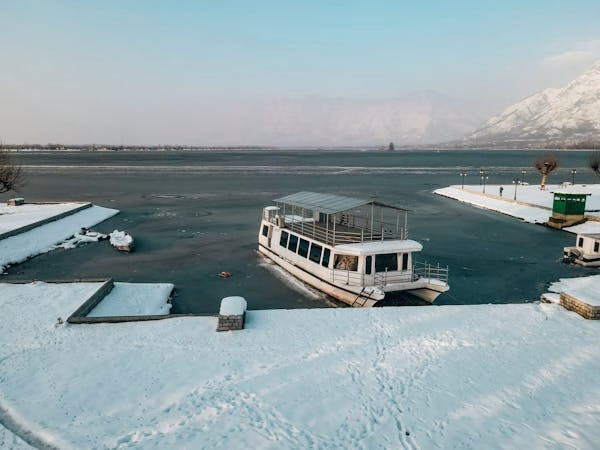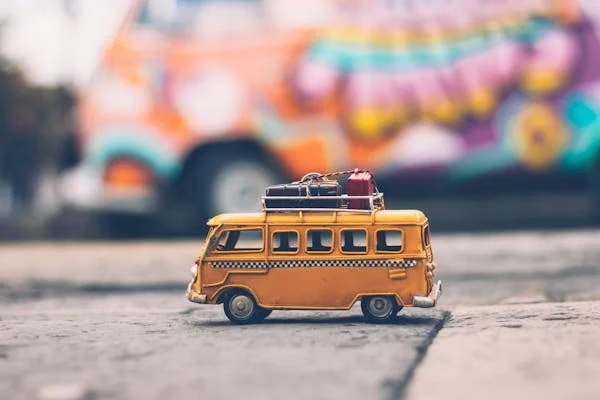Why Is Hunza So Famous?

Ask any Pakistani traveler where they’d go to escape the noise of life, and chances are, they’ll say Hunza. But why is Hunza so famous? Why does this remote mountain valley stir something deep in the soul of anyone who visits?
Let me take you back to my first visit — I remember standing on the terrace of Baltit Fort, looking out at Rakaposhi glowing orange at sunset, the air crisp, the silence thick. In that moment, I realized Hunza is not just a place — it’s an emotion.
Whether you’re a wanderer seeking peace, a photographer chasing grandeur, or a cultural explorer thirsty for meaning, Hunza offers something rare: authentic beauty that hasn’t sold its soul to tourism.
This blog breaks down why Hunza is so famous, and why it absolutely deserves that reputation — with a personal touch, travel insights, cultural depth, and practical reasons. By the end, you’ll know if this valley is your next destination.
Table of Contents

Where Is Hunza?
Hunza Valley is located in the Gilgit-Baltistan region of northern Pakistan, near the borders of China and Afghanistan. It lies along the legendary Karakoram Highway (KKH), often called the “8th Wonder of the World,” and is surrounded by some of the tallest peaks in the world, including Rakaposhi (7,788m), Ultar Sar, and Ladyfinger Peak.
1. Jaw-Dropping Scenery That Doesn’t Need Filters
Hunza’s fame starts with its natural beauty. The landscape looks like it was carved by a divine hand — not chaotic, but breathtakingly perfect.
Passu Cones: These sharp, pyramid-like peaks rise dramatically in the Upper Hunza region and are an icon of Pakistani travel photography.
Attabad Lake: Formed after a tragic landslide in 2010, it’s now a surreal turquoise-blue lake surrounded by towering cliffs.
Eagle’s Nest Viewpoint: Wake up early and catch the first rays lighting up Golden Peak and the surrounding mountains.
Hussaini Suspension Bridge: One of the most dangerous-looking bridges in the world — an adrenaline test with a view.
These are not just scenic spots — they’re experiences that imprint on memory.
2. The People: Hospitality with a Smile and a Story
Hunza is famous not just for what you see — but who you meet.
The locals belong to Burusho and Wakhi ethnic groups. They speak Burushaski and Wakhi, along with Urdu and English. What stands out?
High Literacy Rate: Hunza boasts one of the highest literacy rates in Pakistan — over 90%.
Women’s Participation: You’ll find women running shops, guiding tours, and working in cafes — a progressive social fabric that surprises many visitors.
Warmth and Sincerity: In Hunza, people don’t just smile because it’s polite — they mean it.
Famous mountaineer Nazir Sabir, Pakistan’s first to summit Everest, hails from Hunza — a testament to the region’s grit and grace.
3. Historical Forts and Legends
Hunza’s strategic location made it a crossroads of Silk Road traders, invading armies, and mountain kingdoms. The result? Architecture, folklore, and ruins that whisper of the past.
Baltit Fort: Over 700 years old, this restored Tibetan-style fort sits dramatically above Karimabad. It once housed the rulers of Hunza and still holds echoes of power.
Altit Fort: Older and more authentic, this fort offers insight into Hunza’s earlier dynasties. Don’t miss the guided tour by locals who explain every inch with pride.
Ganish Village: The oldest settlement in Hunza, with wooden mosques and restored watchtowers that showcase early Islamic influence.
These structures turn Hunza into a living museum of mountain history.
4. Adventure Without Extreme Risk
Hunza hits the sweet spot between adventure and comfort. You don’t need to be a mountaineer to enjoy:
Hiking to Rakaposhi Base Camp: A moderate trek with stunning views, ideal for day hikers or overnight campers.
Jeep Safari to Khunjerab Pass: Drive to the Pak-China border at 4,693 meters — one of the highest paved roads in the world.
Cycling and Walking Trails: From Gulmit to Passu, there are calm paths with spectacular panoramas and little traffic.
Paragliding: Offered seasonally in places like Duiker, with views that stretch to China.
Hunza’s terrain is rugged, but not punishing — making it perfect for travelers of all ages and fitness levels.
5. A Haven for Photographers and Filmmakers
Hunza has become a muse for artists, influencers, and filmmakers. Why?
Light in Hunza is surreal — from golden sunrises to dramatic sunsets.
The combination of stone, water, and sky offers a color palette unmatched anywhere else in Pakistan.
Drone photography is legal and popular, giving breathtaking aerial shots of lakes, roads, and forts.
Popular content creators and celebrities — from Irfan Junejo to Sajal Aly — have captured Hunza’s magic, pushing its fame across YouTube and Instagram.

6. Clean, Safe, and Sustainable
Hunza’s fame is also rooted in its eco-conscious mindset:
The valley is remarkably clean compared to many tourist destinations in South Asia.
Locals have plastic-free zones, especially in villages like Ghulkin and Passu.
Solar power and community-led waste management are common.
It’s also very safe, even for solo travelers. Hunza’s social values are peaceful, inclusive, and welcoming to all.
7. A Center of Unique Culture and Languages
Hunza is often described as a “cultural island.” Why?
Burushaski Language: A language isolate — no relation to any other known tongue in the world.
Ismaili Muslim Majority: Known for emphasis on education, ethics, and pluralism.
Festivals: Traditional music, the Ginani harvest festival, and sporting events like polo and buzkashi are highlights.
When you visit Hunza, you don’t just see — you learn.
8. Architecture and Villages That Time Forgot
Villages like:
Gulmit: Full of stone homes, wooden balconies, and a rich Wakhi culture.
Ganish: More than 1,000 years old, now a UNESCO-nominated site.
Hopper Valley: Tucked between glaciers, with mud-built homes and wheat fields.
Hunza’s charm lies in the fact that while hotels are modernizing, the villages still whisper history.
9. Perfect for All Seasons
Hunza is not just a summer destination:
Spring (March–May): Apricot blossoms turn the valley into a pastel dream.
Summer (June–August): Green, vibrant, perfect weather.
Autumn (October): Famous for golden and red leaves.
Winter (Dec–Feb): Snowy silence, fewer tourists, and a deeper connection with locals.
Few places offer such aesthetic variation across seasons — each month tells a different story.
10. Modern Comforts in a Remote Region
Despite being remote, Hunza has:
High-speed internet (fiber in main towns)
Modern hotels and glamping sites
Cafes like Cafe de Hunza, Glacier Breeze, and Yak Grill
ATMs, banks, car rentals, and pharmacies
This blend of comfort and wilderness makes Hunza ideal for families, couples, and even work-from-home travelers.
Why Is Hunza So Famous? A Summary
Let’s recap — Hunza is famous for:
Natural Beauty: Glaciers, peaks, rivers, and lakes
Peaceful, Educated People
Historical Forts and Architecture
Safe Adventure and Treks
Photogenic Landscapes
Cultural Diversity
Clean Environment and Sustainability
Accessibility and Modern Comforts

The Takeaway
Traveling in Pakistan is both exciting and accessible because to its varied transportation system. Every type of traveler has an alternative, from the convenience of ride-hailing services to the affordability of buses and trains.
Metro busses, Careem, and Uber are the most convenient means of transportation for brief city excursions. Pakistan’s picturesque train routes and opulent bus services offer comfortable and reasonably priced long-distance travel. The quickest option to travel long distances is still by domestic flight, particularly when traveling to far-flung northern locations.
Are you prepared to travel to Pakistan? Plan your vacation now to take advantage of the amazing nation’s transportation infrastructure!
Explore carefully planned tours to see the best of this fascinating nation. Please get in touch if you would need more travel advice; we are happy to assist you in organizing your upcoming journey! Additionally, by completing this form, you can personalize your journey.
FAQs – Everything You Need to Know
1. Is Hunza worth visiting for first-time travelers?
Absolutely. It’s Pakistan’s most tourist-friendly region, combining beauty, safety, and culture.
2. Is it expensive to visit Hunza?
Not necessarily. You can find accommodations from budget guesthouses to luxury resorts.
3. What makes Hunza different from Swat or Skardu?
Its cultural identity, literacy rate, and well-organized tourism infrastructure set it apart.
4. Is Hunza safe for solo female travelers?
Yes. Hunza is considered one of the safest places for solo or female travelers in Pakistan.
5. How many days are ideal to explore Hunza?
Minimum 4–5 days. Ideally 7–10 days to visit Upper Hunza, Hopper, and nearby valleys.
6. What’s the best time to visit Hunza?
Spring (Apr–May) for blossoms, and autumn (Oct) for foliage. Summer is great but crowded.
7. Is there anything for children or families?
Yes! Boat rides, light hikes, forts, and cultural activities make Hunza family-friendly.
8. Can I work remotely from Hunza?
Yes. Places like Karimabad and Gulmit now offer good internet and cozy cafes.
9. What language is spoken in Hunza?
Burushaski, Wakhi, and Urdu. Many locals also speak English fluently.
10. How do I get to Hunza from Islamabad?
Either by flying to Gilgit and driving 2–3 hours, or by road via the Karakoram Highway.
11. Are there any local festivals to attend?
Yes — Ginani (harvest festival), Spring Blossom Festival, and local sports events are great cultural windows.

Daniel loves exploring off-the-beaten path destinations and making new friends. Writing blog posts since 2015, Daniel says it helps him to document his travels and cherish them. He loves the fact that what he writes might actually help someone have a better experience in Pakistan and Afghanistan. In his spare time, he loves listening to Tchaikovsky and spend time with his dog Coconut.




